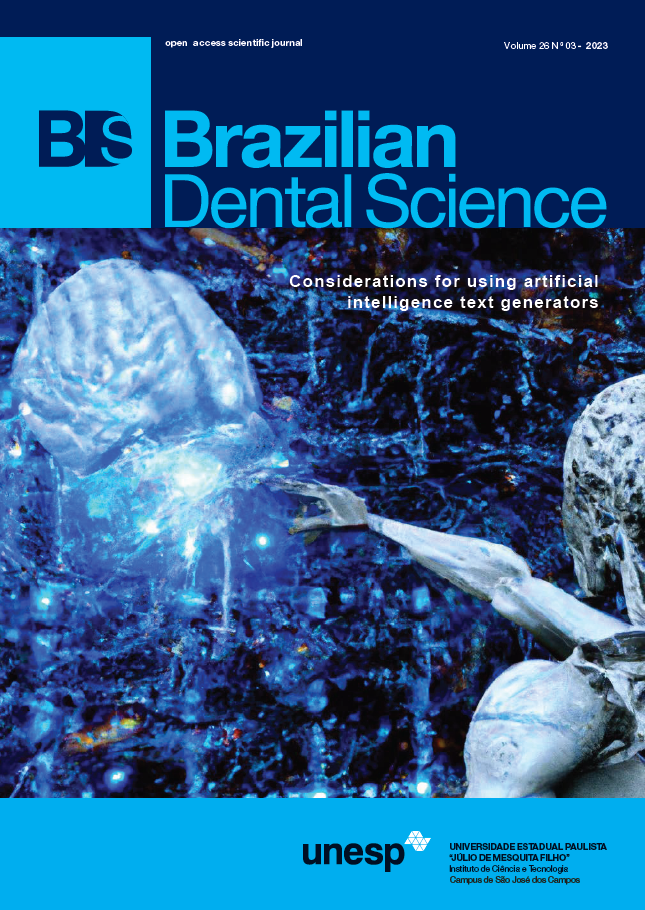The effect of different framework’s material on strain induced in distal abutment in mandibular Kennedy’s class II: an in-vitro study
DOI:
https://doi.org/10.4322/bds.2023.e3775Abstract
Objective: This study aims to compare the strain induced in the supporting structures of unilateral mandibular removable partial denture frameworks retained by extra-coronal attachments fabricated with three different materials. Material and Methods: Three mandibular class II digitally designed and printed acrylic models with detachable abutments were used to fabricate three removable partial denture framework with extra coronal attachments from three different materials. A total of 33 models were prepared for strain testing (n=11). Models were divided into three groups according to framework’s material: porcelain fused to cobalt chromium (PFM), polyetherketoneketone (PEKK) and polyetheretherketone (PEEK) group. Unilateral load of 60 N was applied in the three groups and strains were measured around the main abutment and saddle area using strain gauge. Results: Statistical analysis was performed using Shapiro-Wilk’s test and by checking data distribution. Data were found to be non-parametric and were analysed using Kruskal-Wallis test followed by Dunn’s post hoc test with Bonferroni correction. PFM group showed significantly the highest strain values around abutment, slot 1 (1mm distal to the socket of the last abutment) and slot 2 (1 cm away from slot 1) respectively (843.00±23.08, 91.00±6.52 and 1274.00±65.71) than the other tested groups (p<0.05) at same tested sites respectively followed by PEKK group (384.00±37.48, 81.00±2.24 and 135.00±0.00) and PEEK group (29.00±4.18, 63.00±4.47 and 52.00±5.70). Conclusions: PEEK and PEKK for partial denture framework with extra coronal attachments are adequate alternative to PFM due to their good mechanical response applying less strain on supportive structures in free-end cases. PEEK induces lower strain magnitude on the supporting structures when compared to PEKK.
KEYWORDS
Denture precision attachment; Dental stress analysis; Partial denture; Polyetheretherketone; Removable partial denture.
Downloads
Published
How to Cite
Issue
Section
License
Brazilian Dental Science uses the Creative Commons (CC-BY 4.0) license, thus preserving the integrity of articles in an open access environment. The journal allows the author to retain publishing rights without restrictions.
=================




























